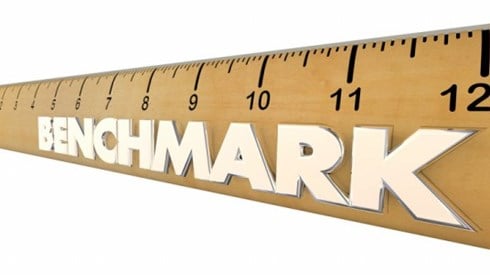Common Blind Spots When Hiring New Employees

Mike Poskey | February 05, 2018

You may not realize that your hiring managers have blind spots when hiring new employees for job openings. Identifying these blind spots is important, though, because a hiring decision based on subjective opinion could set your company back and prove costly.
The process for identifying and addressing blind spots begins with understanding the most common blind spots, then understanding how to turn subjective thinking into objective measurement of each candidate. Next is applying this process to your company's hiring decisions to reduce the risk of hiring the wrong candidate.
Below are the seven most common blind spots that ZERORISK HR has identified in our research, along with suggestions for how to overcome these challenges to ensure you hire the best fit for your organization.
Seven Most Common Blind Spots
Blind Spot #1: The Candidate Is Personable
Hiring managers often make the mistake of believing the best fit for a job opening is the person who displayed the best people skills during the interview. The thought process is that surely this individual will fit well in their role because they were very personable during the interview. That is a dangerous conclusion unless it is supported by measurable information.
An objective measurement might reveal that the individual is not personable in a workplace setting. Perhaps this individual regularly argued with coworkers or did not take directions from superiors in a previous role in a similar context. They have the ability to be personable at times or put their best foot forward during a job interview, but their core competency does not match the profile of the most personable people in your organization.
You can determine whether this individual has the core competency of a personable person by asking questions during the behavioral interview that reveal their behavior in previous workplace settings. You should also use a job applicant appraisal form to objectively measure whether their competencies match the role.
Blind Spot #2: The Candidate Is a Good Leader and Developer
When you are hiring for a management role, using objective measurements to find the best fit is important, because the decision could affect your organization for years to come—positively or negatively. Negative results include the following.
-
Poor employee engagement
-
Breakdown of team cohesion and culture
-
Increased turnover
-
Damage to your company's image or reputation
When interviewing potential managers, you cannot rely on the candidate telling you that he or she is a good manager, leader, and developer of people. You must examine their past behavior as an indicator of performance in a management role in your organization. Also, before even starting to interview candidates, your hiring department needs to determine the core competencies that match up with a successful manager or leader in your organization or industry.
Determining these core competencies allows you to whittle down the field of candidates until you find the best fit. It is important that everyone in your organization is on board with this process, because people tend to want to hire the candidate who sounded the most impressive or was the most charismatic. However, relying on a subjective opinion creates a risk of hiring the wrong fit, thereby hurting your organization in both the near and long term.
Blind Spot #3: The Candidate Has Sales Acumen
We often hear the phrase from sales organizations that "I know a good salesperson when I see one." Unfortunately, many organizations have experienced a negative impact on their market share when they discover that a "good salesperson" is not actually the best fit for a particular role.
The responses in a behavioral interview and applicant appraisal form are the best measure to discover whether a salesperson is actually a good fit. Whether you are a sales organization or are hiring for a sales role within your company, this objective measurement will guide you in discovering whether the candidate actually has sales acumen.
Just because a candidate has held sales positions in the past does not necessarily equate to success in sales. You might be surprised to find out from an objective measurement that the candidate who did not "look and feel" like a good salesperson is actually a better fit than the person who displayed the most confidence during an interview.
Blind Spot #4: The Interviewer Assumes the Candidate Is Not Skilled for the Role
This blind spot is similar to the previous mistake of making an assumption that the candidate is qualified, but in this case, the interviewer is assuming a candidate is not the right fit because of a lack of experience. Perhaps the candidate's résumé is not as strong as other candidates, or he or she lacks experience in a similar role compared to other candidates. This blind spot hurts companies who assume that a lack of experience means a candidate is not as skilled for the role, creating the risk of losing out on top talent.
Making this decision is difficult when your "gut feeling" says this person is not the right fit because they appear to lack skills or experience. However, hiring managers should rely on objective measurement to determine which candidate is the best fit in the role.
Blind Spot #5: The Candidate Has Good Organizational Skills
This is a very common bias across industries. When your company is hiring for an office manager or logistics type role, hiring managers are often misled by a candidate who appears to be organized.
A candidate might show up to the interview looking polished and organized and "having it together," but hiring managers should not rely on a visual assessment to determine the best fit. They also should not rely on the candidate's claims of being organized.
This is where good behavioral interview skills unlock past behavior to reveal whether the individual was actually disorganized at a previous company or became agitated when asked to perform tasks related to the role. It can also reveal whether the individual's competencies do not match the job profile of an individual requiring very good organizational and prioritization skills.
The key is using the objective measurements to discover whether the candidate has the workplace behavior of an organized person and matches the ideal candidate profile. By relying only on subjective measurement, you risk hiring an individual who could actually slow down workflow and create inefficiencies for your organization.
Blind Spot #6: The Hiring Manager Relies on Word of Mouth
One of the most challenging blind spots to navigate is when a candidate is referred to your organization. The candidate may have been referred by a colleague, client, or business partner. What we've seen is that the person making the referral presents an argument that this candidate would be great for your company because of one element that matches the industry or nature of work: "John used to work in automotive; he would be great to add to your car dealership."
Hiring managers are inclined to trust the opinion of the referring person and to hire John without determining whether John actually has the skills and abilities to perform tasks in the role. But, an objective measurement might reveal whether John is actually a good fit or not.
If you determine that John is not a good fit, telling the referring person that you will not be hiring John without damaging the existing relationship can be a challenge. You can overcome this challenge by using the objective measurement results to explain why John is not a good fit, ensuring that your relationship with the referring person is maintained.
Blind Spot #7: The Candidate Does Not Have Experience
Focusing on a candidate's work history instead of their past behavior in a similar role is a dangerous blind spot that could lead to the wrong hire. It's easy to make a hiring decision by just looking at a résumé, especially if another candidate does not have much work history in the role you are hiring for. However, you still need to unlock the competencies of the candidates to determine which person matches the role.
You would be surprised how often the candidate with the lesser experience is actually the better fit. They just need the right opportunity to apply their skills and traits. Unfortunately, hiring managers are often misled by the experience bias, causing them to overlook a candidate who could provide value to their company.
Eliminate These Blind Spots When Hiring
The best way to eliminate these seven common blind spots from the hiring process is to build consistency into your organization. Doing so means that hiring managers should use the applicant appraisal form and be trained on behavioral interview techniques that unlock past behavior in a similar role.
These objective measurements validate assessments of what a top performer looks like in your company or in the industry. They also allow you to set performance targets to determine the success of the person hired.
Finally, if hiring managers need more incentive to use objective measurements for each candidate, consider using a reward system tied to employee retention. If hiring managers' pay or bonuses are tied to retention rates, their tendency to rely on subjective opinions to make hiring decisions is eliminated.
This system would also eliminate the false thinking of, "Let's bring this person in and see how it works out." That type of hiring inconsistency leads to turnover, creating additional costs for your company.
Would you buy a new car without inspecting the vehicle, reading consumer and industry reviews, and comparing this vehicle to other vehicles in the marketplace? No. Otherwise, you might have to purchase a replacement vehicle in the near future after making an uneducated purchasing decision. Similarly, employers need to adhere to consistent practices for objectively measuring candidates to ensure the right fit for their job opening.
Consider using an objective evaluation process that measures each candidate's competencies. Objective evaluations obtained through behavioral interviews will help hiring managers unlock past behavior and ensure they are hiring the right candidate for your next job opening. (The ZERORISK Hiring System offers such objective evaluations.)
Mike Poskey | February 05, 2018







